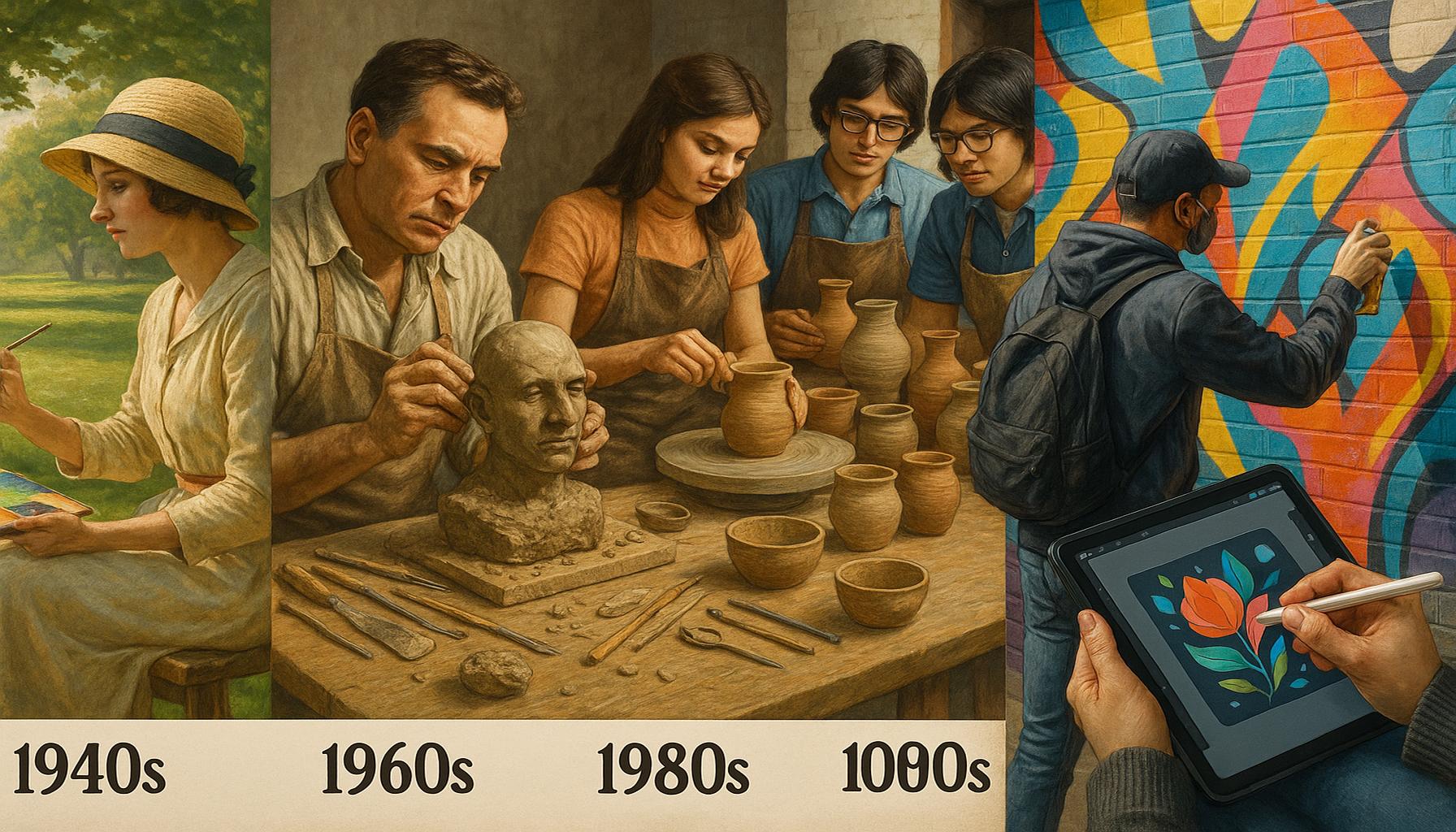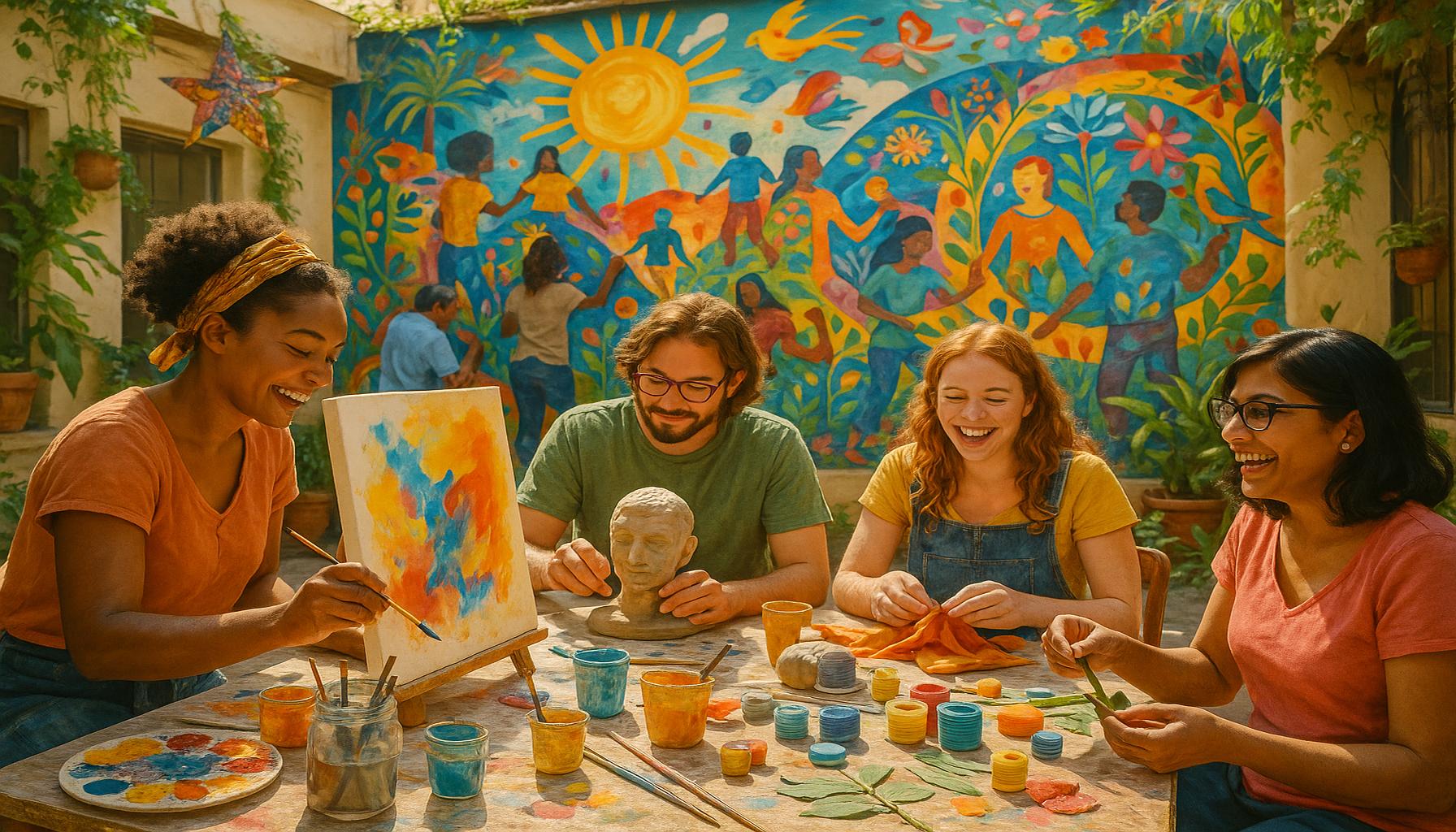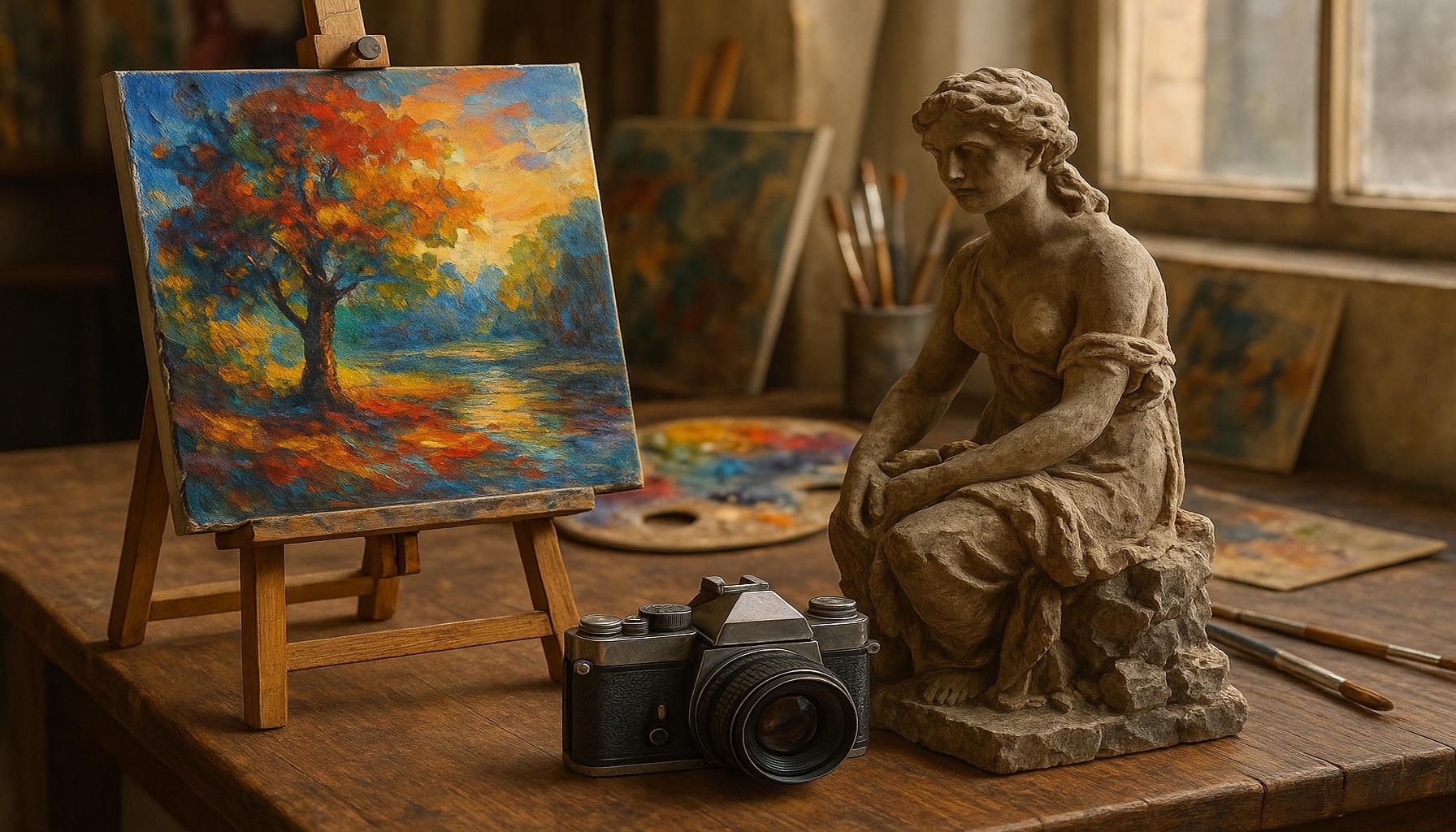The Influence of Art on Mental Health: How Painting and Drawing Can Improve Well-Being
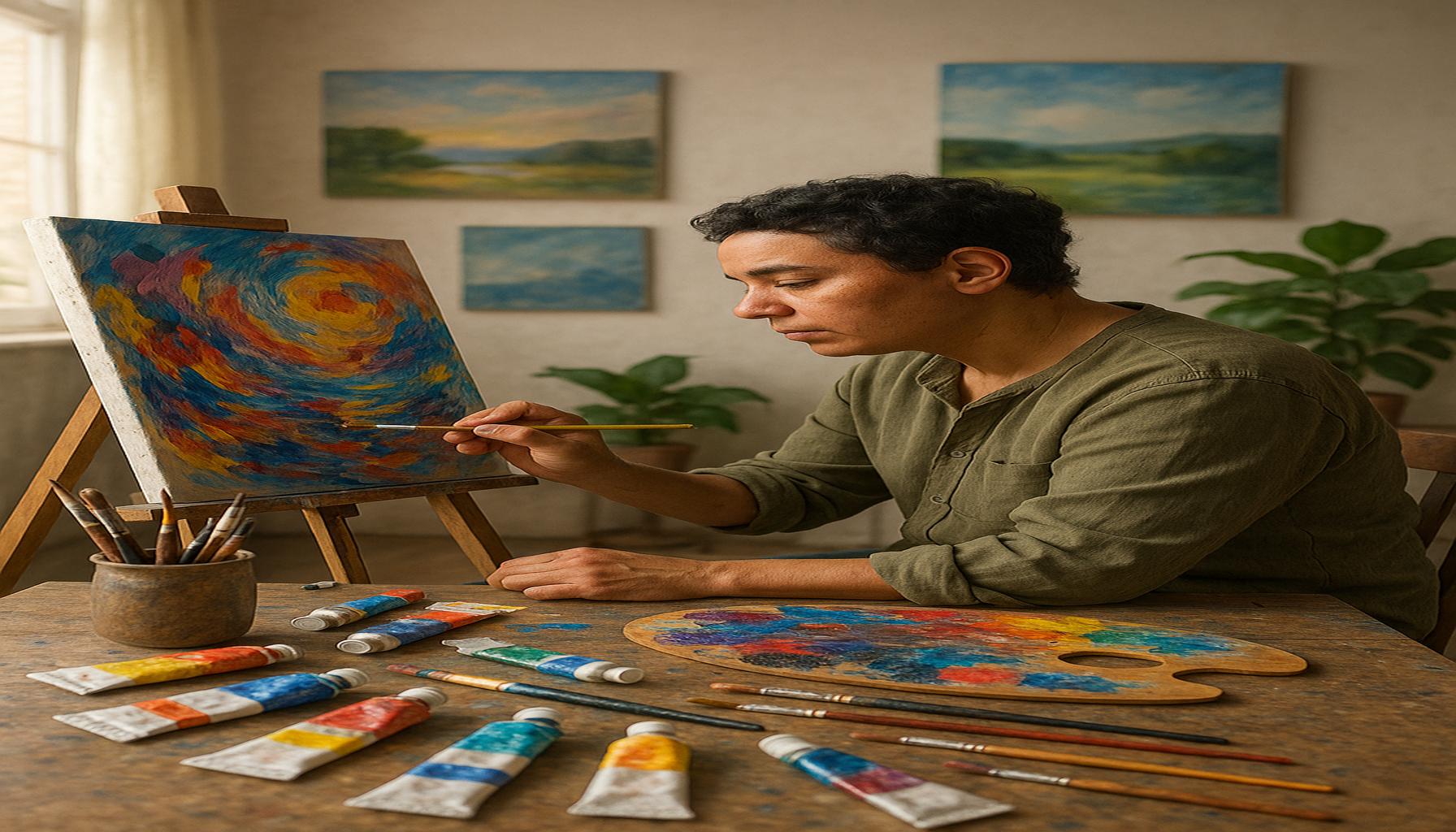
The Therapeutic Power of Creativity
Art has long been a medium for expression, but its profound impact on mental health is gaining increasing recognition. Many individuals find solace in artistic activities, creating a bridge between the mind and emotions. Engaging in painting and drawing can serve as an effective outlet in navigating the complexities of daily life and can play a crucial role in promoting overall wellness.
Why might art be beneficial to mental well-being? Here are some key points:
- Stress Relief: Engaging in creative activities can significantly reduce stress levels, providing a therapeutic escape. For instance, studies have shown that spending just 45 minutes engaged in artistic activities can lower cortisol levels, the hormone associated with stress.
- Emotional Outlet: Art allows individuals to express feelings that may be difficult to verbalize. This is particularly beneficial in therapeutic settings where individuals may use color, form, and texture to depict emotions related to pain or joy, enabling a potent form of self-discovery.
- Mindfulness: The act of painting or drawing promotes mindfulness, enhancing focus and presence in the moment. Immersing oneself in the creative process can provide a meditative state that helps to quiet the mind and alleviate anxious thoughts.
- Boost in Confidence: Completing a piece of artwork can foster a sense of accomplishment and self-worth. Many artists, whether seasoned or novice, report a significant boost in confidence from creating something unique and personal.
Research supports this connection, with studies indicating that creative expression can lead to reduced levels of anxiety and depression. One notable study at the University of Utah found that participants who engaged in art-making reported improved mood and a higher sense of well-being, suggesting that the act of creation is inherently beneficial.
Moreover, participating in art therapy has been shown to yield positive outcomes for individuals dealing with trauma. For example, programs like the Creative Forces initiative in the U.S. focus on providing art therapy to veterans and active-duty personnel, helping them to process complex emotions and experiences.
As we delve deeper into the relationship between art and mental health, it’s essential to explore specific ways in which painting and drawing can transform well-being. From community art programs aimed at reducing social isolation to individual journeys of personal healing, the benefits of engaging with art are both profound and wide-reaching. Whether through a community mural project that brings neighbors together or a solitary moment spent with a sketchbook, creativity stands as a powerful ally in the journey to better mental health.
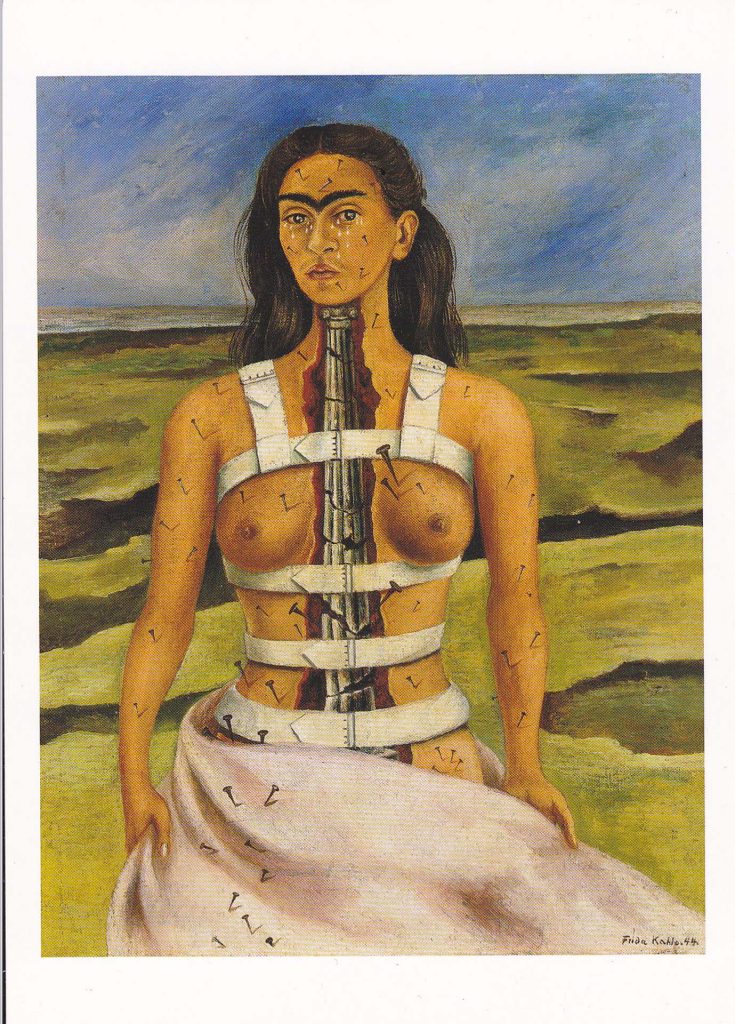
DISCOVER MORE: Click here to dive deeper
The Transformative Impact of Painting and Drawing
When it comes to mental health, creativity isn’t merely a pastime; it’s a profound tool for healing and personal development. The act of painting or drawing serves multiple psychological functions, contributing to one’s emotional stability and overall sense of well-being. As people engage with colors, brushes, and canvases, they unlock pathways to their innermost feelings, translating complex emotions into visual form. This creative act allows them to confront and process experiences that may otherwise remain buried.
One of the most striking aspects of art is its ability to foster a sense of connection. In a world increasingly characterized by social isolation, art programs have emerged as vital lifelines for communities. Take, for instance, the growing trend of community art workshops in urban areas across the United States. These programs not only provide a creative outlet but also bring people together, allowing them to share their stories and experiences through collaborative artwork. Participants often report feeling a renewed sense of belonging, as our need for social connection is intertwined with mental health.
Research highlights this community aspect by emphasizing the role of art collectives in enhancing mental well-being. A study conducted by the University of California showed that individuals participating in group art classes exhibited a marked decrease in feelings of loneliness. The shared experience of creating art together fosters camaraderie and empathy, allowing participants to build supportive networks. This communal engagement proves that art can amplify mental wellness on both personal and societal levels.
Additionally, the medium of art encourages introspection. Engaging with painting or drawing allows individuals to slow down and reflect on their thoughts and feelings. This mindfulness aspect is especially beneficial for those facing stress or anxiety. The focused attention required to create can draw individuals away from overwhelming thoughts and into a state of flow, creating a meditative respite that can lessen the grip of anxiety and offer clarity.
Moreover, the challenge and satisfaction of mastering a new skill, such as painting techniques or drawing proportions, can provide significant psychological benefits. The sense of achievement that accompanies the completion of a piece, no matter the skill level, contributes to increased self-esteem and personal fulfillment. Many find that those small victories are a springboard to tackling challenges outside of the studio, giving rise to a renewed perspective on their capabilities.
- Healing from Trauma: Numerous psychological studies show that artistic expression can assist individuals in dealing with traumatic experiences. Art therapy often involves unpacking traumatic memories and reshaping them through creative processes.
- Service to Mental Illness: For people with mental illnesses such as depression or bipolar disorder, art can serve as a form of self-care that helps manage and mitigate symptoms.
- Enhanced Focus: Engaging in art can significantly improve concentration and cognitive functions, which may be beneficial for individuals who struggle with attention disorders.
As this exploration unfolds, it is essential to consider not just the individual benefits of engaging with art but also its broader implications for community health and resilience. From personal journeys that reveal new depths of self-knowledge to collective projects that foster unity, the influence of art on mental health is profound and multifaceted.
The Influence of Art on Mental Health: How Painting and Drawing Can Improve Well-Being
When we explore the profound connection between art and mental health, it becomes clear that engaging in activities such as painting and drawing offers myriad benefits beyond mere expression. Numerous studies suggest that the act of creating art can have therapeutic effects on individuals facing various mental health challenges, including stress, anxiety, and depression. Art serves as a powerful emotional outlet, allowing individuals to convey feelings that may be too complex for words. According to the American Art Therapy Association, art therapy can help people confront and process emotions, enhance self-awareness, and promote mental well-being. The use of vibrant colors and imaginative concepts in painting can activate dopamine levels, leading to feelings of happiness and relief. Moreover, drawing and painting often require concentration and focus, which can divert attention from negative thoughts and anxieties. This state of absorption, often referred to as “flow,” facilitates mindfulness, a practice endorsed by many mental health professionals. As individuals immerse themselves in the creative process, they not only reduce stress but also cultivate a sense of accomplishment and personal fulfillment.In addition to individual growth, community-based art initiatives can foster social connections and provide support networks that are crucial for emotional health. Group art sessions promote collaboration and communication, creating strong bonds among participants. These interactions enhance feelings of belonging, a key factor for mental wellness.Importantly, the influence of art on mental health does not discriminate based on skill level or artistic ability. Whether one is doodling in a sketchbook or creating a masterpiece on canvas, the benefits remain accessible. This inclusivity encourages people to explore their creativity regardless of previous experience, making the healing power of art available to all. To delve deeper into the enriching world of art therapy and its mental health benefits, consider engaging in a local workshop or exploring online resources dedicated to this transformative practice.
| Category | Benefits |
|---|---|
| Emotional Expression | Art can help articulate complex feelings, promoting mental clarity and emotional processing. |
| Stress Relief | The creative process can lead to lower levels of stress and anxiety, enhancing overall well-being. |
Art’s role in promoting mental health is substantial and deserves continued exploration, as individuals and communities can greatly benefit from the healing power of creativity.
DON’T MISS: Click here to discover the healing effects of writing
Art as a Therapeutic Medium
Art doesn’t just serve as a creative outlet; it functions as a therapeutic medium, particularly when integrated with professional mental health care. Art therapy, a specialized therapeutic approach, harnesses the power of creative expression to support individuals grappling with mental health issues. Trained therapists guide clients in utilizing art materials to explore feelings, reduce anxiety, and enhance self-awareness. This practice proves particularly effective for those who find it challenging to articulate their emotions verbally, as visual art can communicate feelings that language often cannot capture.
A notable study from the American Art Therapy Association indicates that art therapy can lead to significant improvements in various mental health symptoms, including decreased levels of anxiety and depression. Clients engaging in art therapy often report not only a reduction in emotional distress but also an enhanced ability to manage their emotions effectively. The process of creating art becomes a safe space to confront vulnerabilities and build resilience.
Utilizing art as a form of therapy is not confined to traditional settings; many local organizations and non-profits across the United States are embracing art-based programs to reach underserved populations, including veterans struggling with PTSD and at-risk youth. For example, organizations like Art Therapy Studio in Ohio provide workshops that emphasize creative expression as a means of healing from trauma. Such programs often celebrate recovery journeys by facilitating artistic expression amidst supportive environments.
The Neuroscientific Perspective
The connection between art and mental health is further underscored by neuroscientific research. Studies have shown that engaging in creative activities such as painting and drawing can stimulate the brain’s reward pathways, activating the release of dopamine—a neurotransmitter linked to feelings of pleasure and satisfaction. This phenomenon is not limited to professional artists; even casual doodlers can experience this positive feedback loop.
Furthermore, engaging in art-making can lead to altered brain function, enhancing areas associated with emotional regulation and cognitive flexibility. A 2018 study published in the Journal of Neuroscience found that participants engaged in an art-making session demonstrated increased connectivity in the brain regions responsible for emotional control, suggesting that the act of creating art can cultivate emotional resilience over time.
Art as a Means of Expression for Diverse Communities
Art also serves as a vital means of expression for diverse communities, aiding individuals in confronting cultural trauma and societal challenges. Community art initiatives remain pivotal in fostering inclusivity, allowing individuals from varying backgrounds to convey their narratives visually. For example, in many urban settings, mural projects have sprung up to amplify voices that have historically been silenced, contributing to community healing and empowerment.
- Cultural Healing: Artistic expressions such as music, dance, and visual arts cultivate cultural heritage and can help communities address historical trauma. Initiatives focused on cultural storytelling through art can inspire collective healing.
- Mindfulness Benefits: The repetitive motions inherent in drawing or the meditative focus required for painting can create a mindfulness experience similar to meditation, aiding in stress relief and mental clarity.
- Fostering Empathy: Engaging with art allows individuals to walk in others’ shoes. Whether through visual narratives or shared artistic experiences, participants often develop a deeper understanding and appreciation for different perspectives.
The myriad benefits of painting and drawing reveal art’s profound potential as a tool for improving mental health and well-being. By facilitating self-expression, community connection, and emotional healing, art cultivates a nurturing space where individuals can explore their inner worlds while fostering resilience and connection in broader society.
DIVE DEEPER: Click here to discover the art of storytelling
Conclusion
In a world where mental health challenges are increasingly prevalent, understanding the influence of art—specifically painting and drawing—on well-being becomes essential. As highlighted throughout this article, the therapeutic benefits of art offer a multifaceted approach to mental health recovery. Art not only serves as a vital medium for self-expression but also provides an opportunity for emotional exploration and resilience building. The integration of art therapy into mental health treatment has shown promising results, enabling individuals to navigate their feelings when words fall short.
Furthermore, the burgeoning field of neuroscience reinforces the positive impact of creative expression on brain function, illustrating how engaging in artistic activities can enhance cognitive flexibility and emotional regulation. This scientific backing bolsters the argument that art is not just for artists but can be an accessible tool for anyone seeking to improve their mental health. Community initiatives further demonstrate the power of collective healing through art, showcasing how sharing narratives can empower individuals and foster empathy across diverse backgrounds.
As we continue to explore the intersection of art and mental health, it is crucial to recognize and promote art as a legitimate form of therapy and as a means of enriching our lives. The evidence suggests that even simple acts of painting or drawing can lead to restorative experiences, encouraging individuals to take the first steps towards embracing their creative potential for better mental health. For those grappling with emotional difficulties, rediscovering or exploring art can be a gateway to healing and well-being in ways that resonate deeply within. Engaging in art today may set the foundation for a more balanced, fulfilling tomorrow.
